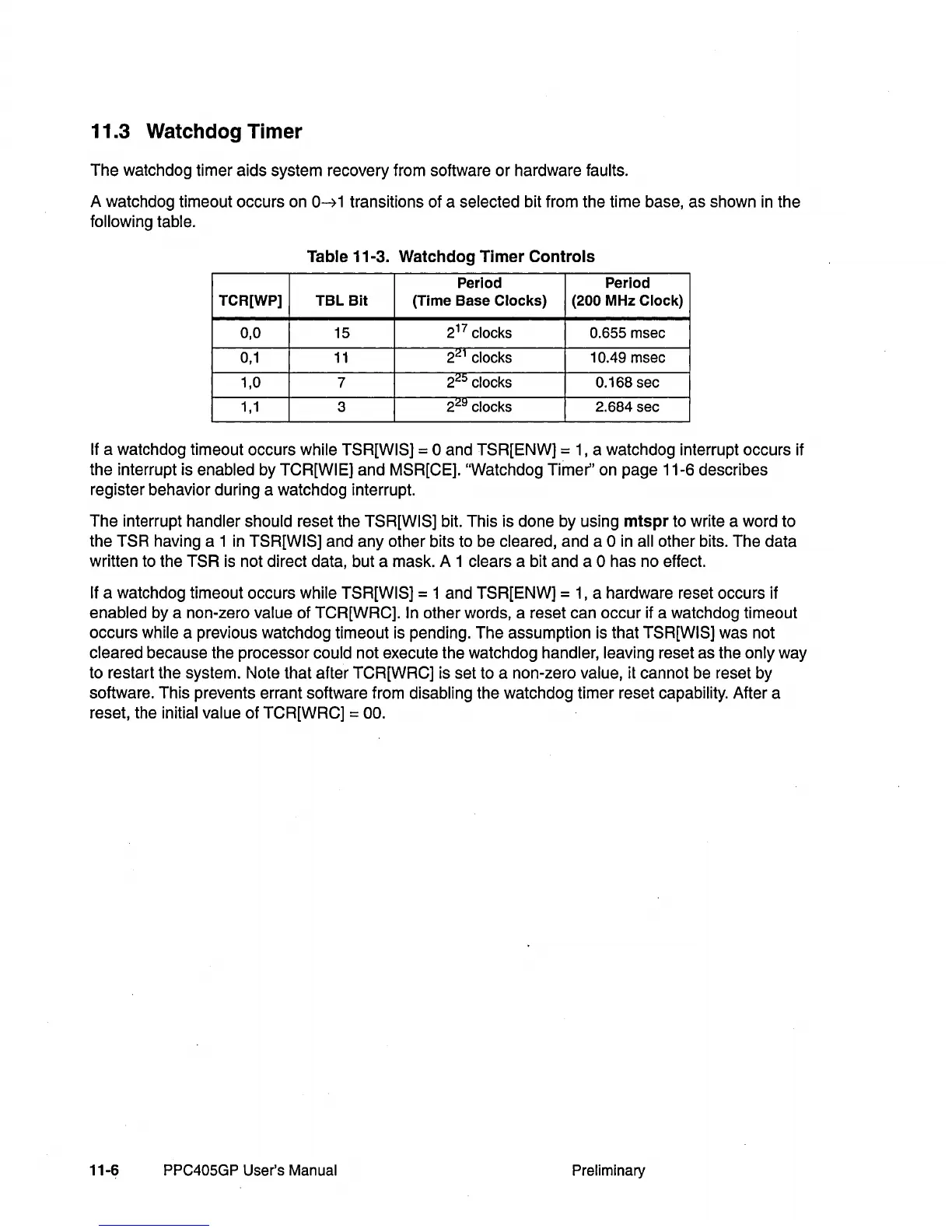11.3 Watchdog Timer
The watchdog timer aids system recovery from software or hardware faults.
A watchdog timeout occurs on 0-71 transitions of a selected bit from the time base, as shown
in
the
following table.
Table 11-3.
Watchdog
Timer
Controls
Period Period
TCR[WP]
TBl
Bit
(Time Base Clocks) (200 MHz Clock)
0,0
15
217 clocks
0.655 msec
0,1
11
2<:1
clocks
10.49 msec
1,0 7
2<:0
clocks
0.168 sec
1,1
3
2<:~
clocks
2.684 sec
If a watchdog timeout occurs while TSR[WIS) = 0 and TSR[ENW] =
1,
a watchdog interrupt occurs if
the interrupt is
enabled by TCR[WIE] and MSR[CE). "Watchdog Timer" on page 11-6 describes
register behavior during a watchdog interrupt.
The interrupt
handler should reset the TSR[WIS] bit. This is done by using
mtspr
to write a word to
the
TSR having a 1
in
TSR[WIS) and any other bits to be cleared, and a 0
in
all other bits. The data
written to the
TSR is not direct data, but a mask. A 1 clears a bit and a 0 has no effect.
If a watchdog timeout occurs while TSR[WIS) = 1 and TSR[ENW] =
1,
a hardware reset occurs if
enabled by a non-zero value of TCR[WRC]. In other words, a reset can occur if a watchdog timeout
occurs while a previous watchdog timeout is pending. The assumption is that
TSR[WIS) was not
cleared because the processor could not execute the watchdog handler, leaving reset as the only way
to restart the system. Note that after TCR[WRC] is set to a non-zero
value, it cannot be reset by
software. This prevents errant software from
disabling the watchdog timer reset capability. After a
reset, the
initial value of TCR[WRC] = 00.
11-6 PPC405GP User's Manual Preliminary
